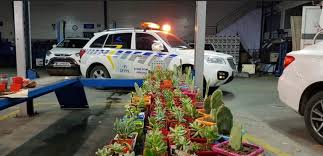Introduction to Vehicles
Vehicles are essential means of transportation that enable people and goods to move from one location to another. They come in various forms and sizes, serving diverse purposes across different modes of travel. The Car rentals in Fuerteventura of vehicles has significantly impacted society, shaping economies, cultures, and urban landscapes.
Types of Vehicles
Vehicles can be categorized based on several criteria, including their mode of operation, purpose, and design. Here are some of the primary types:
1. Land Vehicles
- Cars: Personal vehicles designed for road travel, cars are the most common mode of transport for individuals and families. They range from compact models to luxury sedans and SUVs.
- Motorcycles: Two-wheeled vehicles that offer a more agile and fuel-efficient alternative to cars. Motorcycles are popular for leisure and commuting.
- Bicycles: Human-powered vehicles that are environmentally friendly and promote physical fitness. Bicycles are widely used for short-distance travel and recreational activities.
- Trucks: Larger vehicles designed primarily for transporting goods. They come in various configurations, including pickups, delivery vans, and heavy-duty trucks for freight.
- Buses: Public transport vehicles designed to carry multiple passengers along designated routes. Buses are a cost-effective means of transportation in urban areas.
2. Water Vehicles
- Boats: Smaller watercraft used for leisure, fishing, or transportation. Types include sailboats, motorboats, and canoes.
- Ships: Large vessels designed for deep-water travel, typically used for transporting cargo, passengers, or military purposes. Examples include cargo ships, cruise liners, and naval ships.
- Ferries: Boats that transport people and vehicles across bodies of water, often operating on fixed routes.
3. Air Vehicles
- Airplanes: Aircraft designed for long-distance travel. Commercial jets, cargo planes, and private jets fall into this category.
- Helicopters: Vertical-lift aircraft used for various purposes, including emergency services, transportation, and tourism.
- Drones: Unmanned aerial vehicles (UAVs) that have gained popularity for recreational use, aerial photography, and even delivery services.
Vehicle Components
Vehicles are composed of various systems and components that work together to ensure functionality and safety. Key components include:
- Engine: The heart of the vehicle, converting fuel into mechanical energy to propel the vehicle. Engines can be internal combustion (gasoline or diesel) or electric.
- Transmission: Transfers power from the engine to the wheels, allowing the vehicle to change speeds. Common types include manual, automatic, and continuously variable transmission (CVT).
- Chassis: The vehicle’s frame that supports its body and components. It includes suspension systems that provide stability and comfort during travel.
- Braking System: Critical for safety, this system slows down or stops the vehicle. Types include disc brakes, drum brakes, and anti-lock braking systems (ABS).
- Steering System: Allows the driver to control the direction of the vehicle. It can be manual or powered (hydraulic or electric).
- Electrical System: Powers various components, including lights, infotainment systems, and safety features like airbags and anti-theft devices.
The Evolution of Vehicles
The history of vehicles dates back to ancient times, with the invention of the wheel around 3500 BC marking a significant milestone. Over the centuries, vehicle technology has evolved dramatically:
- Horse-Drawn Carriages: One of the earliest forms of transportation, these vehicles relied on horses for movement.
- Steam Engines: In the 18th century, steam-powered vehicles began to emerge, leading to the development of early locomotives and automobiles.
- Internal Combustion Engine: The late 19th century saw the invention of the gasoline-powered engine, revolutionizing personal and commercial transportation.
- Electric Vehicles (EVs): Gaining traction in the 21st century, EVs are becoming increasingly popular due to advancements in battery technology and growing environmental concerns.
- Autonomous Vehicles: The future of transportation is leaning towards self-driving cars, which utilize advanced sensors, AI, and machine learning to navigate without human intervention.
Environmental Impact and Sustainability
The vehicle industry significantly contributes to environmental issues, particularly air pollution and greenhouse gas emissions. As a result, there is a growing focus on sustainable transportation solutions:
- Electric Vehicles: EVs produce zero tailpipe emissions, offering a cleaner alternative to traditional vehicles.
- Hybrid Vehicles: Combining internal combustion engines with electric propulsion, hybrids aim to reduce fuel consumption and emissions.
- Public Transportation: Promoting the use of buses, trains, and trams can help reduce the number of individual vehicles on the road, lowering overall emissions.
- Alternative Fuels: Biofuels, hydrogen fuel cells, and compressed natural gas (CNG) are being explored as sustainable fuel options.
Conclusion
Vehicles play a crucial role in modern society, facilitating transportation and contributing to economic growth. Understanding the different types of vehicles, their components, and their impact on the environment can help consumers make informed decisions. As technology advances, the future of transportation is poised for exciting changes, with a strong emphasis on sustainability and innovation. Whether for personal use, commercial purposes, or recreational activities, vehicles will continue to shape how we navigate our world.


